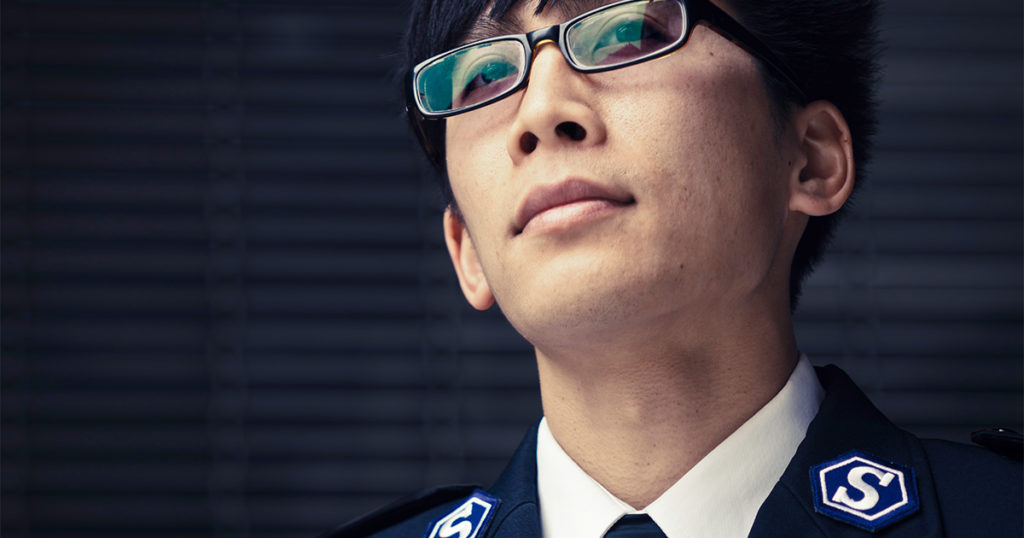How Do I Enlist in The Salvation Army?
"Members, at every level, adhere to our mission: to preach the gospel in Jesus’ name while meeting human needs without discrimination."
Much like a traditional army, The Salvation Army has formal levels of membership. However, unlike a regular army, membership is not based on physical ability but on a personal relationship with God, which motivates service to others. Members, at every level, adhere to our mission: to preach the gospel in Jesus’ name while meeting human needs without discrimination.
First, many donors, friends, partner organizations, churches, and groups contribute financially or support our mission through activities such as ringing bells at Red Kettles during the Christmas season or hosting food drives and fundraising events. These relationships are vital to supporting our mission.
Next, volunteers regularly assist with our programs and services. These volunteers are the backbone of The Salvation Army. They help with tasks such as answering phones, cooking meals, cleaning facilities, and sorting donations in our pantries and stores. Many of our youth, adult and music program leaders are volunteers, as are our musicians and worship participants. Community volunteers also serve on our advisory boards, women’s auxiliaries and Echelon groups. There is a formal process to become a regular volunteer at each local unit, which typically involves providing personal background information to determine if the volunteer is a good fit for the ministry or service need.
The Salvation Army also offers group ministries and services that provide a sense of belonging for participants. These include youth sports, character-building troops, and women’s and men’s ministries. Each of these programs has its own membership guidelines.
A major step toward deeper involvement is when someone decides to attend worship services regularly, shares a testimony of faith in Jesus Christ and expresses an interest in becoming more involved. Like other churches, The Salvation Army offers membership classes, called “soldiership classes,” for those who wish to formally join. These classes, attended by recruits, explore personal faith commitments and cover the basic beliefs of The Salvation Army, as outlined in our 11 doctrinal statements. The classes also review a document called the “Soldier’s Covenant,” which outlines the moral and behavioral expectations for those who choose to become formal members, known as soldiers. Upon completion of the classes, recruits are asked to consider becoming either a soldier or an adherent. An adherent agrees with the core beliefs but does not fully commit to the expectations of soldiership.
Recruits’ classes are also available for children to become junior soldiers. These classes, taught at an age-appropriate level, review the Army’s beliefs and ask children to make a commitment to love God and others and to abstain from harmful substances and habits. Junior soldiers may be between the ages of seven and 18. Senior soldiers may join starting at age 14, provided they fully understand the commitment they are making.
A formal enrollment ceremony is held for junior soldiers, senior soldiers and adherents. This event is a public declaration of their commitment to God and service through The Salvation Army. Junior and senior soldiers wear uniforms that signify their membership level, while adherents typically wear sweaters or blazers.
After becoming a soldier, there are additional levels of involvement. Soldiers may become local officers and take on specific leadership positions, overseeing ministry areas, such as youth programs, music, finance or property management.
Soldiers who feel a calling to full-time ministry are invited to become candidates for officership. This process varies by region but generally involves checking references, obtaining recommendations, interviews, personal budgeting, and testing to assess emotional, mental, and spiritual readiness. Even if made Cadet Lieutenants, they are still in their training period. Cadets usually relocate to attend The Salvation Army College for Officer Training, which lasts two years. Upon completing their training, they are commissioned as Salvation Army officers and appointed to full-time service at a Salvation Army unit, where they receive a living allowance. Most units also employ full-time or part-time paid staff, many of whom are soldiers or adherents who consider The Salvation Army their church home. These non-officer staff members work in departments such as finance, social service offices, thrift stores, after school clubs or day camps.
Salvation Army officers hold ranks based on years of service and responsibility. Officers in training are called cadets. In the first five years, an officer is known as a lieutenant, followed by the promotion to captain. At 15 years of service, officers are promoted to the rank of major. Other ranks are determined by supervisory responsibility rather than years of service. Divisional commanders sometimes hold the rank of lieutenant colonel, while officers in territorial leadership may be appointed as full colonels. At many territorial or national headquarters, the leaders hold the rank of commissioner. The highest rank, General, is held only by one officer and is an elected position responsible for leading the Army worldwide. Are you looking for a place to belong? Come join our Army!







